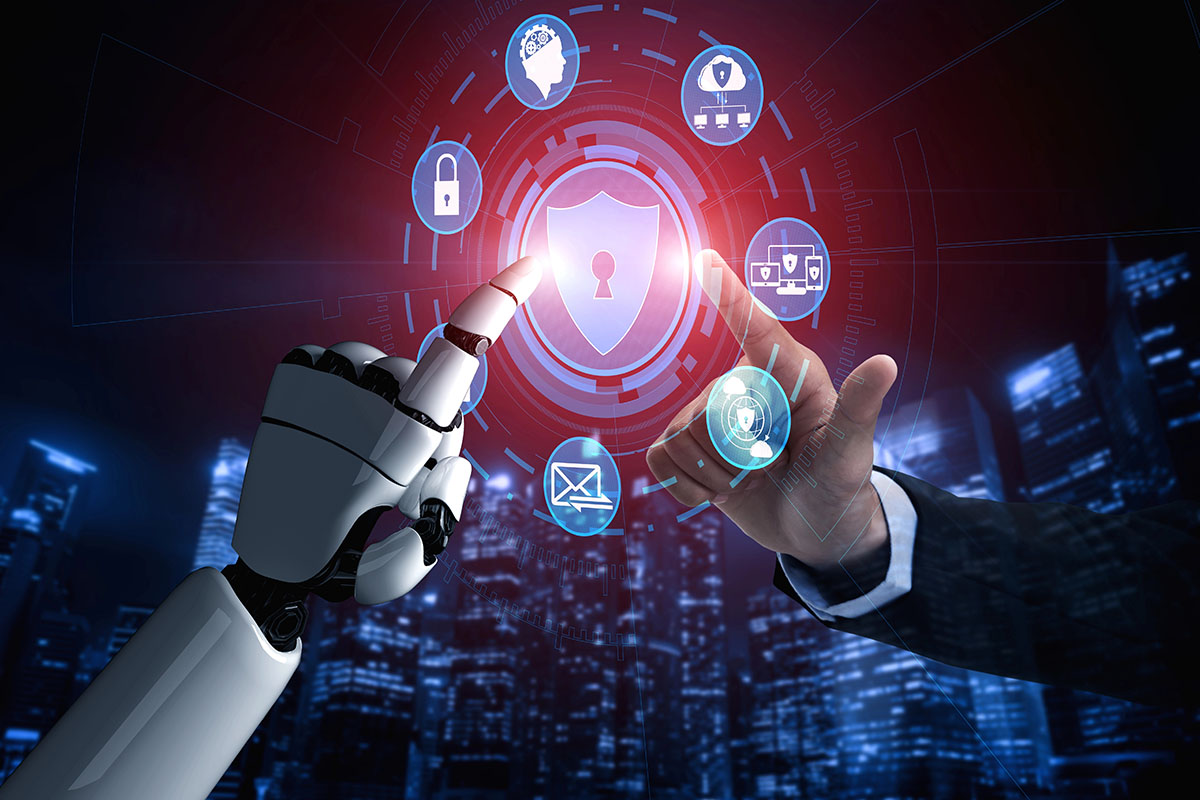

Seattle IT: Essential AI & IT Automation Considerations for Business Leaders



AI and IT automation are transforming the business world, making companies more efficient and innovative in various industries. A Seattle managed service provider can help leverage these technologies to streamline your business operations, cut costs, and make better decisions.
Your company must adapt to the rapid changes in technology and what consumers expect, and leveraging Seattle IT solutions can help you maintain a competitive edge.
Benefits of AI-Driven Automation:
- Increased Efficiency: Automates repetitive tasks, freeing up time for strategic initiatives.
- Cost Reduction: Minimizes manual errors and optimizes resource allocation.
- Improved Decision-Making: Leverages data analytics for insightful strategies.
Challenges to Consider:
- High Initial Costs: Implementation requires significant investment.
- Data Privacy Concerns: Safeguarding sensitive information is paramount.
- Workforce Adaptation: Employees need training to work alongside AI systems.
By embracing AI and IT automation, businesses can move forward and remain relevant and agile.
Understanding AI and IT Automation
Artificial Intelligence (AI) refers to the simulation of human intelligence in machines designed to think and act like humans. This includes learning, reasoning, and self-correction. IT Automation involves the use of software and technology to create repeatable instructions and processes to replace or reduce human interaction with IT systems.
Differences Between Traditional Automation and AI-Driven Approaches
Traditional Automation
- Typically relies on pre-defined rules.
- Limited adaptability; functions within set parameters.
AI-Driven Approaches
- Uses machine learning and data analysis.
- Adapts in real-time, improving efficiency over time.
Business Automation Benefits
Implementing AI-driven automation can transform your business landscape significantly. Benefits include:
- Efficiency: Reduces manual work, streamlining processes which leads to faster completion of tasks.
- Cost Reduction: Lowers operational costs by minimizing errors and optimizing resource allocation.
- Improved Decision-Making: Analyzes vast amounts of data quickly, providing actionable insights that enhance strategic planning.
The Importance of Human-Machine Collaboration
Human-machine collaboration is crucial. This partnership combines human understanding with technological speed, leading to creative solutions that promote business growth.
1. Collaboration in the Workplace
Employees contribute creativity, empathy, and critical thinking skills. On the other hand, machines are proficient at quickly and accurately processing large amounts of data. When these two forces work together, they boost productivity and improve problem-solving abilities.
2. The Significance of Human Insight
While technology can handle repetitive tasks automatically, it lacks the nuanced understanding that humans have. For instance, although AI can examine customer data to identify patterns, workers can interpret these insights by considering emotional intelligence and cultural awareness. This combination results in better decision-making.
Continuous Learning and Upskilling for Automation
Adapting to automation requires skill development that aligns with new technologies. Companies must foster a culture of ongoing education to keep their workforce relevant and competitive.
Training Programs and Certifications
Several platforms offer valuable resources for upskilling:
- LinkedIn Learning: Provides courses on AI principles, data analysis, and automation tools.
- Coursera: Features partnerships with universities, offering in-depth certifications in machine learning and automation.
These programs equip employees with knowledge to harness technology effectively.
Strategies for Effective Upskilling
To maximize the impact of training, consider these strategies:
- Personalized Learning Paths: Tailor training programs based on individual career goals and job requirements.
- Mentorship Opportunities: Pair employees with experienced mentors who can guide them through new challenges.
- Hands-on Projects: Engage employees in real-world projects that utilize automation tools, fostering practical experience.
Investing in continuous learning not only enhances employee capabilities but also strengthens the organization’s ability to adapt to technological advancements. Staying ahead requires a commitment to growth through knowledge and skills development.
Strategies for Implementing AI Automation
Implementing AI-first strategies involves a systematic approach to identify and integrate automation tools effectively. Here are key steps to consider:
1. Identify Opportunities for Automation
- Conduct an internal audit to assess repetitive tasks across departments.
- Engage teams in brainstorming sessions to uncover pain points that could benefit from automation.
2. Choosing Appropriate AI Tools
Evaluate various automation tools based on specific business needs.
- Salesforce Einstein offers powerful AI-driven analytics for customer relationship management.
- UiPath provides robust robotic process automation (RPA) solutions that streamline workflows.
3. Best Practices for Integration
- Start with pilot projects to test the effectiveness of chosen tools in controlled environments.
- Ensure clear communication between IT and operational teams to align objectives and expectations.
- Prioritize data security and compliance during integration to protect sensitive information.
Implementing these strategies allows organizations to optimize their processes, reduce manual workloads, and leverage AI technology for better decision-making.
Future Trends in AI and Automation
- Hyperautomation is emerging as a significant trend, combining technologies like AI, machine learning, and robotic process automation to streamline business operations. This approach enhances efficiency by automating complex workflows, enabling organizations to achieve more with fewer resources.
- The rise of decision intelligence allows businesses to leverage AI for informed decision-making, analyzing vast amounts of data to derive actionable insights.
- Autonomous systems are set to play a crucial role in future business processes, handling tasks with minimal human intervention while maintaining high accuracy and speed.
Embracing Change in the Workplace Through AI & IT Automation
Embracing change and innovation is crucial for businesses navigating AI & IT automation. Consider the following:
- Adaptability: Be open to new technologies and methodologies.
- Continuous Learning: Invest in training programs to upskill and reskill your workforce.
Staying ahead requires a proactive approach to challenges presented by automation. Encourage a culture that values agility and growth, ensuring your organization thrives in the changing market. By integrating AI into business processes, you not only enhance efficiency but also position your company as a leader in the competitive market. Embrace these tools and watch your business flourish.
Frequently Asked Questions About IT Automation
What is the significance of AI and IT automation for businesses today?
AI and IT automation are transforming businesses by enhancing efficiency, reducing costs, and improving decision-making. Staying ahead in a competitive marketplace requires organizations to embrace these technologies to leverage the full potential of their services.
How do AI-driven approaches differ from traditional automation?
AI-driven approaches utilize machine learning and data analytics to adapt and improve processes over time, whereas traditional automation follows predefined rules without the ability to learn. This key difference allows AI-driven systems to offer greater flexibility and enhanced performance.
What role does human-machine synergy play in the workplace?
Human-machine synergy is crucial as it combines human insight with technological efficiency. Successful collaboration between humans and machines can lead to innovative solutions, improved productivity, and case studies demonstrate how this partnership can drive business success.
Why is continuous learning important for employees in automated workplaces?
Continuous learning is essential in automated workplaces as technology evolves rapidly. Employees must upskill or reskill to remain relevant and effective. Training programs and certifications from platforms like LinkedIn Learning and Coursera can help facilitate this ongoing education.
What strategies should businesses implement for effective AI automation?
Businesses should identify opportunities for automation by assessing their processes, choose appropriate AI tools, and follow best practices for integrating these technologies into existing systems to maximize benefits. Enlisting help through IT consulting in Seattle WA can help with these strategies.
What future trends should businesses anticipate in AI and automation?
Emerging trends such as hyperautomation, which combines various technologies including AI, machine learning (ML), and robotic process automation (RPA), are set to redefine business processes. The role of autonomous systems will expand, further transforming how organizations operate.
Table of Contents

